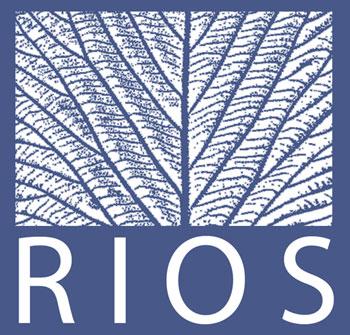
About WaterProof platform
Watersheds are being degraded around the world, with dire impacts on water security. Nature based Solutions (NbS) can preserve or restore degraded watersheds, thereby addressing critical water security issues, however today there is a lack of sufficient uptake and investment. This is in part due to the complexity and time required to demonstrate an NbS portfolio’s positive return on investment (ROI) for water security outcomes, a significant first step required for unlocking at-scale funding commitments by public and private sector water actors.
The WaterProof platform has been developed to provide users with a rapid and indicative NbS investment portfolio and associated ROI. The tool is intended to engage actors interested in exploring green infrastructure solutions to local water challenges and provide program sponsors with a pre-feasibility level of ROI estimation. Specifically, the system virtualizes a series of natural capital ecosystem service models developed by the Stanford Natural Capital Project (InVEST and RIOS) and pre-formats relevant global data sets to radically reduce the time, cost, and resources required for NbS portfolio ROI assessments.
Key outputs provided to users include summary watershed characterization, maps for recommended NbS portfolios, full lifecycle costing, ROI evaluation at pre-feasibility level, and co-benefits estimation. The primary audience for this tool includes individuals concerned with watershed stewardship and water treatment costs at utilities, water stewardship leads at private sector companies who are large water users, and conservation practitioners or managers focused on water security and watershed health.
About us
The Nature Conservancy (TNC) is a global environmental organization dedicated to conserving the lands and waters on which life depends. Guided by science, we create innovative and practical solutions to our world's most pressing challenges so that nature and people can thrive together.
The Waterproof web tool is focused on the macro-basins of the world and aims to support decision-making based on the calculation of environmental and financial indicators in a basin, presenting investment alternatives in Nature Based Solutions projects. In this way, TNC, through the Waterproof app, promotes actions for the conservation of nature, sustainable development, the strengthening and well-being of communities (among others).
Scientific development matters, especially at this critical time for nature. Our work is based on science. We support innovation, leadership, and communication for conservation success. For this, Waterproof makes available mathematical, statistical and spatial analysis models such as the implementation of the InVEST, RIOS and ROI models, which require input data for physical variables such as precipitation, evapotranspiration, soil parameters, among others, with from which the user will be able to select a location anywhere in the world and receive recommendations from a portfolio of activities for certain water security challenges, and a high-level ROI based on implementation costs and savings in water treatment.

About the models

InVEST enables decision makers to assess quantified tradeoffs associated with alternative management choices and to identify areas where investment in natural capital can enhance human development and conservation. It uses maps (rasters) as sources of information and produces maps as outputs to communicate results in biophysical and/or economic terms.
In WaterProof we use InVEST to model outputs for:
- Annual Water Yield
- Seasonal Water Yield
- Sediment Delivery Ratio
- Nutrient Delivery Ratio (Nitrógeno)
- Nutrient Delivery Ratio (Fósforo)
- Carbon Storage and Sequestration

RIOS provides a standardized, science-based tool for prioritizing global watershed investments. RIOS facilitates the identification of sites where protection or restoration activities can produce, at the lowest cost, the greatest benefits for people and nature.
In WaterProof we use RIOS to develop investment portfolios that prioritize:
- Erosion control for drinking water quality
- Erosion control for reservoir maintenance
- Nutrient retention (Nitrogen)
- Nutrient retention (Phosporus)
- Flood Mitigation
- Improved groundwater recharge
- Base flow
About Nature based Solutions
Per IUCN 'Nature based Solutions are actions to protect, sustainably manage, and restore natural and modified ecosystems that address societal challenges effectively and adaptively, simultaneously providing human well-being and biodiversity benefits'. The WaterProof system specifically targets water security-related societal challenges and evaluates climate outcomes as co-benefits.
This type of restoration seeks to increase diversity by plantingnew species, whose individuals have been obtained from the collection of seeds and propagules, their sowing in the nursery and subsequent planting in the reserve. In other words, it implies that, with human intervention, the ecosystem is helped to overcome factors that prevent regeneration and guarantee the development of recovery processes.
It is used when the ecosystem has low resilience or is too altered and therefore cannot recover on its own. Tree planting is a specific activity that is common in some watershed areas that maybe related to the planting of native trees in degraded forests, grasslands, or degraded agricultural lands. Planting native vegetation refers to the planting of any other type of vegetation including grasses, herbaceous plants, shrubs, wetland plants or riparian vegetation, and may include activities to maintain vegetation such as irrigation, weeding, thinning, replanting and invasive speciescontrol. Some types of silvopastoral practices can be included such as planting trees in pastures, fencing or other ways to keep livestock out of riparian areas or other natural vegetation.
Active restoration promotes the return of an ecosystem'sconditions to a trajectory similar to the one it had before deterioration, which requiressufficient knowledge about the most important cycles and processes of the ecosystem, about the pressures that originated the alteration; their nature and their causes, severity, spatial scale of the impacts and their possibilities of recurrence and frequency.
Among the activities carried outare the following:
- Revegetation with native plants.
- Control or elimination of stressors or disturbances.
- Isolation or enclosure of the area by means of fencing with posts and wire and live fences.
- Water management
- Soilmanagement and conservation
- Reshaping of the topography or geoforms, such as terracing to prevent erosion
- Establishment of biomantos or other coverage
- Maintenance of the planted material
- Adaptive management in case of deviation from the desired successional trajectory or the presence of biological invasions or disturbances.
- Evaluation and monitoring of the restoration and its activities

Nature based solutions supported by conservation refer to actions that seek to conserve current land coverby signing conservation agreements, paying rangers, or fencing off areas. This action does not generate changes in the coverage, but prevents degradation, as would occurin a no-project scenario
Conservation agreements arean efficient and effective instrument for negotiating interests and conflicts in watersheds between owners of areas of interest for water and biodiversity and the institutions that have clearer competencies for management and conservation of these areas.
These agreements become an instrument of trust, reciprocity and articulation between the actors involved: the owners, the authorities of local institutions and the users of ecosystem services, where, through contracts, the protection of areas at risk of degradationis agreed upon.Thus negotiating the non-deforestation of forests and moorlands, and the implementation of agroecological practices such as the removal of cattle from sensitive areas, the establishment of fences along the banks of streams and rivers to preventthe entryof clattleand favor natural regeneration, the construction of infiltration ditches and the application of zero or minimum tillage.
They can include payments of environmental fees bytheusers of water for human consumption, to be repaidin incentives and compensation for the owners of areas of water interest through long-term agreements or contracts and conditioned to conservation, restoration and productive innovation.
Conservation agreements are entered into in writing, and it is desirable that they beexpressly, clearly and concisely defined: the object of the contract, including the object of conservation, the actors who sign it, the actions and benefits that they will provide, the commitments and obligations of each of the parties, the threats they face, the penalties for non-compliance with the agreed conditions, the duration of the contract, and the modalities for their renewal and continuity.

This type of restoration is achieved when strategic assistance actions are carried out to enable degraded ecosystems to overcome or eliminate factors that prevent their regeneration.
It consists of eliminating the sources of disturbancethat cause deterioration and protecting the project site sufficiently to allow natural recovery processes to occur.
This is the least intrusive and least costly level of intervention to achieve ecological restoration. The most common strategy is physical fencing e.g., barbedor electric fencing). Some passive restoration exercises also include installing structures that serve as perches or shelters for animals that are potential seed dispersers in order to attract them and expedite the process. No planting is done in this scheme.

Agroforestry activities are defined as a series of technologies for land-use in which trees are combined with agricultural crops and / or pastures to increase and optimize production in a sustained manner. The planting of forest crops and trees is used sequentially and in combination, with the application of soil conservation practices. These practices and systems are designed and executed within the context of a farm management plan, where farmer participation is key.
These practices can be classified into four large groups:
Agroforestry Systems (trees with crops)
- Cultivation in alleys
- Shade trees on perennial crops
- Homegardens
- Improved fallows
- Windbreakers and protective fence
- Mixing perennials with other crops
- Agroforestry for firewood production
Silvopastoral Systems (trees with livestock)
- Live fences Pastures with
- Pastures with trees
- Protein banks
- Integration of animals with wood production
Agrosilvopastoral Systems (trees with crops and livestock)
- Home gardens with animals
- Rows of shrubs for feeding animals, soil conservation and compost
- Integrated crop, wood and animal production
